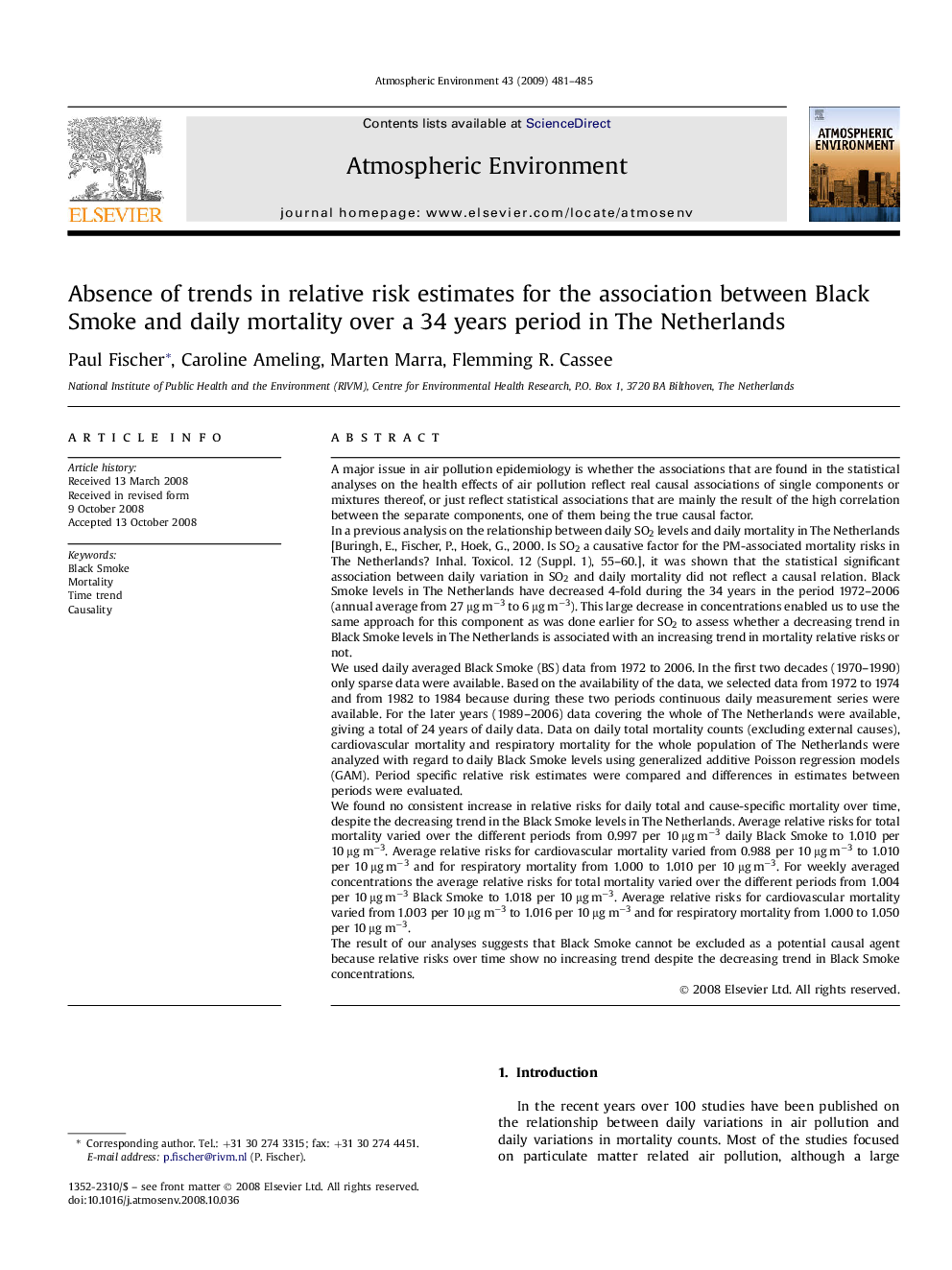| کد مقاله | کد نشریه | سال انتشار | مقاله انگلیسی | نسخه تمام متن |
|---|---|---|---|---|
| 4442276 | 1311145 | 2009 | 5 صفحه PDF | دانلود رایگان |

A major issue in air pollution epidemiology is whether the associations that are found in the statistical analyses on the health effects of air pollution reflect real causal associations of single components or mixtures thereof, or just reflect statistical associations that are mainly the result of the high correlation between the separate components, one of them being the true causal factor.In a previous analysis on the relationship between daily SO2 levels and daily mortality in The Netherlands [Buringh, E., Fischer, P., Hoek, G., 2000. Is SO2 a causative factor for the PM-associated mortality risks in The Netherlands? Inhal. Toxicol. 12 (Suppl. 1), 55–60.], it was shown that the statistical significant association between daily variation in SO2 and daily mortality did not reflect a causal relation. Black Smoke levels in The Netherlands have decreased 4-fold during the 34 years in the period 1972–2006 (annual average from 27 μg m−3 to 6 μg m−3). This large decrease in concentrations enabled us to use the same approach for this component as was done earlier for SO2 to assess whether a decreasing trend in Black Smoke levels in The Netherlands is associated with an increasing trend in mortality relative risks or not.We used daily averaged Black Smoke (BS) data from 1972 to 2006. In the first two decades (1970–1990) only sparse data were available. Based on the availability of the data, we selected data from 1972 to 1974 and from 1982 to 1984 because during these two periods continuous daily measurement series were available. For the later years (1989–2006) data covering the whole of The Netherlands were available, giving a total of 24 years of daily data. Data on daily total mortality counts (excluding external causes), cardiovascular mortality and respiratory mortality for the whole population of The Netherlands were analyzed with regard to daily Black Smoke levels using generalized additive Poisson regression models (GAM). Period specific relative risk estimates were compared and differences in estimates between periods were evaluated.We found no consistent increase in relative risks for daily total and cause-specific mortality over time, despite the decreasing trend in the Black Smoke levels in The Netherlands. Average relative risks for total mortality varied over the different periods from 0.997 per 10 μg m−3 daily Black Smoke to 1.010 per 10 μg m−3. Average relative risks for cardiovascular mortality varied from 0.988 per 10 μg m−3 to 1.010 per 10 μg m−3 and for respiratory mortality from 1.000 to 1.010 per 10 μg m−3. For weekly averaged concentrations the average relative risks for total mortality varied over the different periods from 1.004 per 10 μg m−3 Black Smoke to 1.018 per 10 μg m−3. Average relative risks for cardiovascular mortality varied from 1.003 per 10 μg m−3 to 1.016 per 10 μg m−3 and for respiratory mortality from 1.000 to 1.050 per 10 μg m−3.The result of our analyses suggests that Black Smoke cannot be excluded as a potential causal agent because relative risks over time show no increasing trend despite the decreasing trend in Black Smoke concentrations.
Journal: Atmospheric Environment - Volume 43, Issue 3, January 2009, Pages 481–485